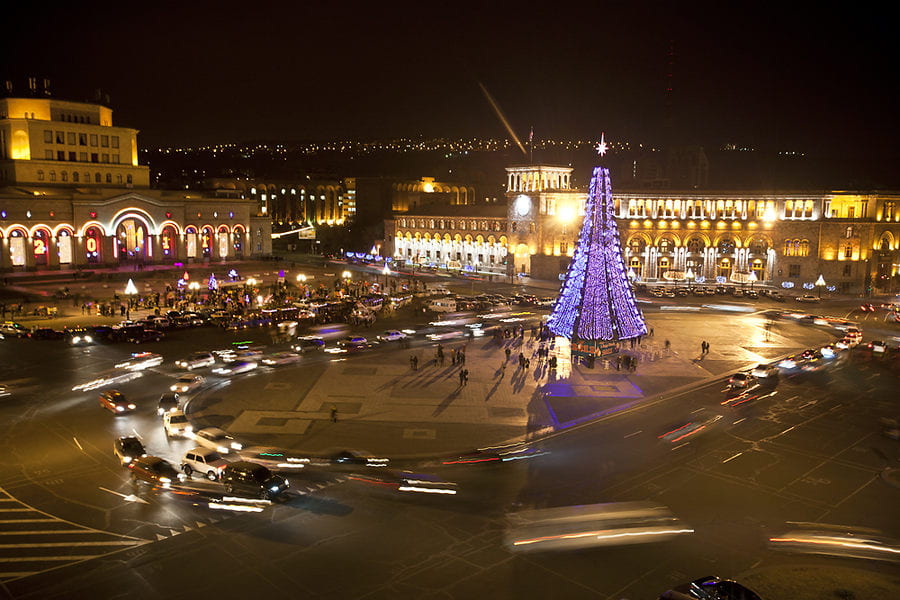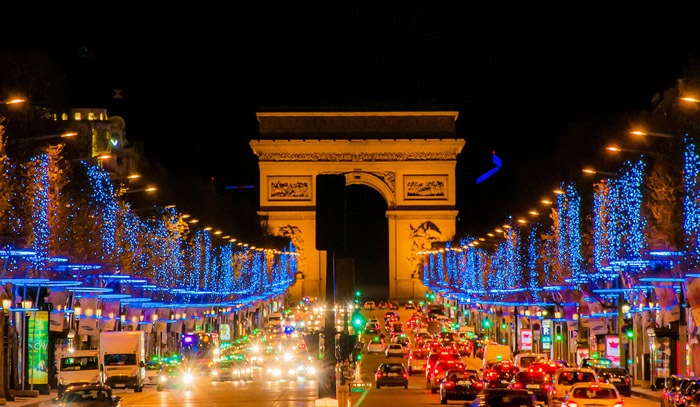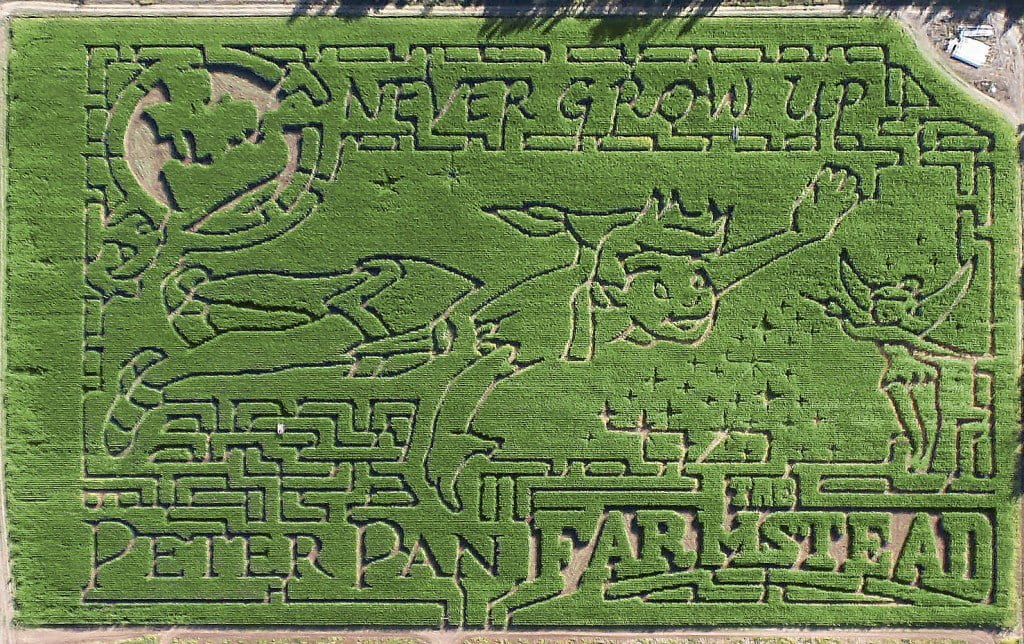
The preparation for the New Year celebration usually starts at mid-November in Armenia. Families get together to discuss what they are going to cook for the wealthy New Year celebration table. Everything is discussed in micro details. The table should be filled with all kinds of to please the guests of any taste.
Anyway, there are some “must have” dishes that embellish the laid table. In the center of attention is a huge leg of pork, then comes Armenian dolma, pasuts dolma (the vegetarian version of beef dolma, made of all sorts of seeds and grains), turkey, chicken, fish, pancake rolled with spicy meat called blinchik, all kinds of salads, kufta and ishli kufta, a few hundred liters of natural juices and mineral waters, plus the dignity of all Armenian men cognac, vodka, wine, champagne and so on and so forth. The New Year starts at midnight of the 31st of December.

After celebrating and wishing happy New Year to each other Armenians start to visit their neighbors, relatives and friends. They start with the most honorable once (their parents or godfather and godmother) and then following week they go on visiting their relatives and friends.
Christmas

The Armenian Apostolic Church celebrates Christmas on January 6th. On this day it also celebrates the Epiphany (which means the revelation that Jesus was God’s son). Epiphany is now mainly the time Churches remember the Visit of the of Wise Men to Jesus; but some Churches, like the Armenian Apostolic Church, also celebrate the Baptism of Jesus (when he started his adult ministry) on Epiphany.

People bring Christmas fire from churches to their homes, believing it will bless their families and bring success. To celebrate Christmas women usually cook rice with raisins, fish, ghapama(traditional Armenian dish made of pumpkin) and gata with a coin in it. People say that the one who finds the coin in his piece of gata is going to be the luckiest during the year.
Some Armenians fast (don’t eat certain foods) in the week before Christmas. The Christmas Eve meal is called khetum.
Մարդիկ եկեղեցիներից Սուրբ Ծննդյան կրակ են բերում իրենց տները՝ հավատալով, որ դա կօրհնի իրենց ընտանիքները և հաջողություն կբերի: Սուրբ Ծնունդը նշելու համար կանայք սովորաբար բրինձ են պատրաստում չամիչով, ձուկով, ղափամա (դդմից պատրաստված հայկական ավանդական ուտեստ) և գաթա՝ մետաղադրամով։ Մարդիկ ասում են, որ նա, ով կգտնի մետաղադրամը իր կտոր գաթայի մեջ, տարվա ընթացքում ամենահաջողակն է լինելու։
Ամանորյա տոնակատարության նախապատրաստությունը Հայաստանում սովորաբար սկսվում է նոյեմբերի կեսերից։ Ընտանիքները հավաքվում են՝ քննարկելու, թե ինչ են պատրաստվում պատրաստել ամանորյա հարուստ տոնական սեղանի համար: Ամեն ինչ քննարկված է միկրո մանրամասներով։ Սեղանը պետք է լցված լինի բոլոր տեսակի համեղ ուտելիքներով՝ ցանկացած ճաշակի հյուրերին գոհացնելու համար։
Ինչևէ, կան մի քանի «պարտադիր» ուտեստներ, որոնք զարդարում են դրված սեղանը։ Ուշադրության կենտրոնում խոզի մի հսկայական բուդ է, հետո՝ հայկական տոլման, պասուց տոլման (տավարի տոլմայի բուսակերական տարբերակը՝ պատրաստված բոլոր տեսակի սերմերից և հատիկներից), հնդկահավը, հավը, ձուկը, կծու մսով գրտնակված բլինչիկ կոչվող նրբաբլիթը, ամեն տեսակ աղցաններ, քյուֆթա ու իշլի քյուֆթա, մի քանի հարյուր լիտր բնական հյութեր ու հանքային ջրեր, գումարած բոլոր հայ տղամարդկանց արժանապատվությունը՝ կոնյակ, օղի, գինի, շամպայն և այլն։ Նոր տարին սկսվում է դեկտեմբերի 31-ի կեսգիշերին։
Սուրբ Ծնունդ
Տոնելուց և միմյանց Ամանոր մաղթելուց հետո հայերը սկսում են այցելել իրենց հարևաններին, հարազատներին և ընկերներին: Նրանք սկսում են ամենապատվավորից (նրանց ծնողներից կամ քավորից ու կնքամորից), իսկ հաջորդ շաբաթ այցելում են իրենց հարազատներին ու ընկերներին։
Հայ Առաքելական եկեղեցին հունվարի 6-ին նշում է Սուրբ Ծնունդը։ Այս օրը տոնում է նաև Աստվածահայտնությունը (որը նշանակում է հայտնություն, որ Հիսուսը Աստծո որդին է): Աստվածահայտնությունն այժմ հիմնականում այն ժամանակն է, երբ եկեղեցիները հիշում են Իմաստունների այցը Հիսուսին. բայց որոշ եկեղեցիներ, ինչպես Հայ Առաքելական Եկեղեցին, նույնպես նշում են Հիսուսի Մկրտությունը (երբ նա սկսեց իր չափահաս ծառայությունը) Աստվածահայտնության օրը:
Որոշ հայեր Սուրբ Ծննդին նախորդող մեկ շաբաթում ծոմ են պահում (որոշ ուտելիքներ չեն ուտում): Սուրբ Ծննդյան ճաշը կոչվում է խեթում











